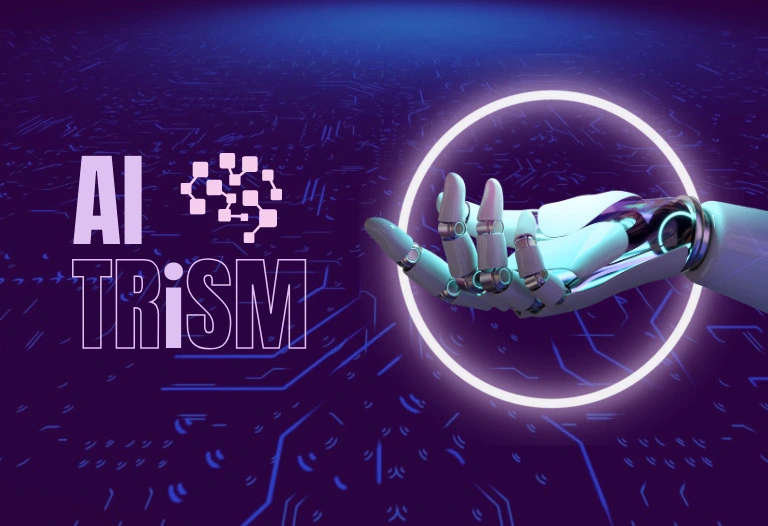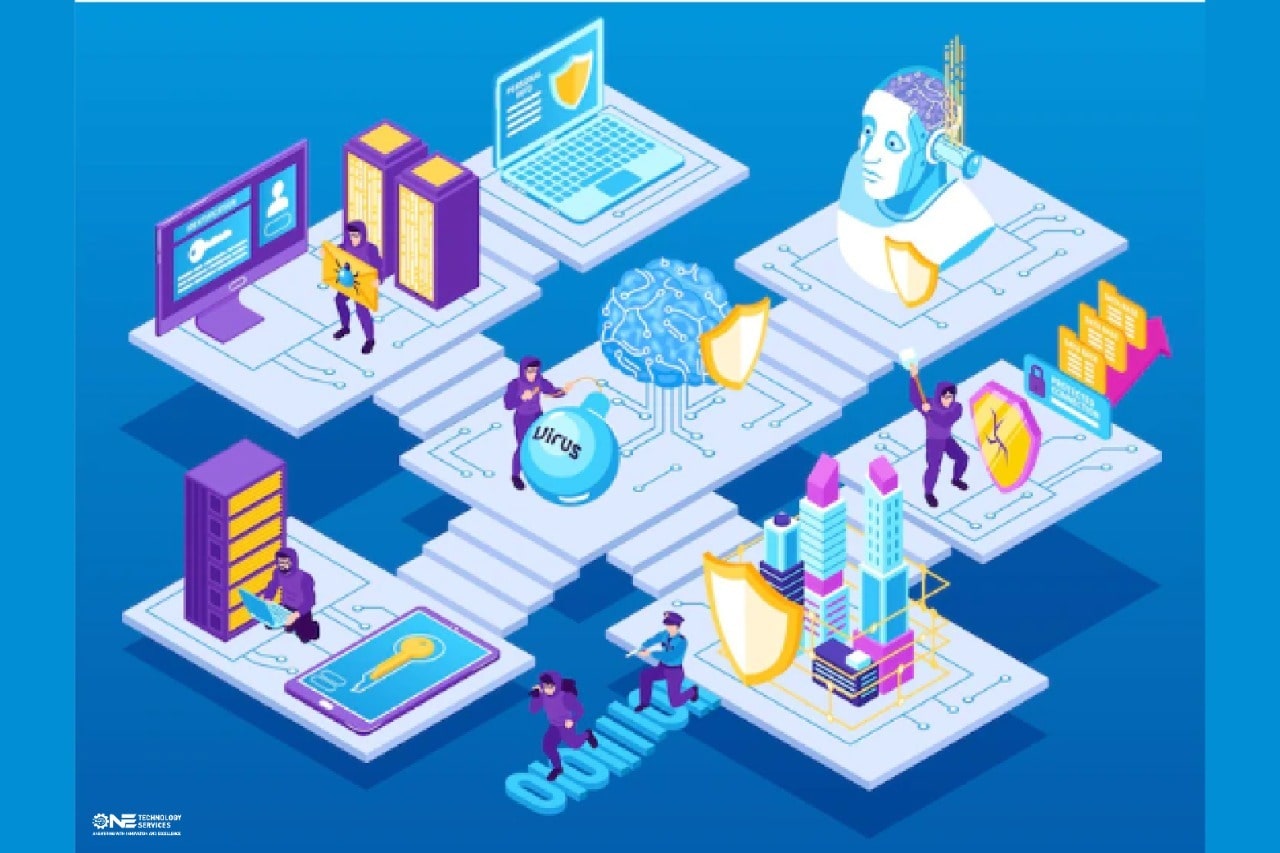Introduction
Artificial Intelligence (AI) is no longer confined to research labs or science fiction. From predictive analytics to real-time automation, AI has embedded itself into modern enterprise infrastructure. But with great power comes significant responsibility — especially when it comes to trust, risk, and security management (TriSM) in AI systems.
As organizations scale their AI initiatives, they face a pressing need to govern them effectively. This is where AI TriSM — a framework that combines risk management, compliance, ethics, and security — plays a critical role.
In this article, we unpack what AI TriSM is, why it matters, and how One Technology Services helps organizations deploy AI safely, responsibly, and at scale.
What is AI TriSM?
AI TriSM (Trust, Risk, and Security Management) is a governance framework designed to ensure that artificial intelligence systems operate ethically, securely, and reliably. Introduced by Gartner as a strategic trend, AI TriSM aims to create transparency and accountability throughout the AI lifecycle — from data collection to model deployment and monitoring.

Key Pillars of AI TriSM:
- Trust – Ensuring fairness, explainability, and ethical usage
- Risk – Identifying and mitigating algorithmic and compliance risks
- Security – Protecting AI systems from cyber threats and adversarial attacks
- Compliance – Meeting regulatory and legal obligations
- Operationalization – Implementing continuous governance at scale
Why AI Governance Is No Longer Optional
Without a structured AI TriSM framework in place, organizations expose themselves to significant risks:
- Algorithmic bias leading to unethical or discriminatory decisions
- Security vulnerabilities that hackers can exploit
- Compliance failures resulting in legal penalties
- Loss of public trust in AI-enabled services
AI initiatives that lack governance often result in unintended consequences. In sectors like healthcare, finance, or HR, these risks can directly impact lives and livelihoods.
One Technology Services recognizes that AI governance is not a box to check — it’s a continuous strategy. That’s why AI TriSM forms the backbone of our approach to safe and scalable AI deployment.
The Components of AI TriSM in Practice
Let’s break down how AI TriSM is applied across the AI lifecycle:
1. Data Integrity and Transparency
AI systems are only as good as the data they’re trained on. TriSM begins with ensuring that data is:
- Accurate and clean
- Free from bias
- Collected ethically and legally
- Properly anonymized (if personal)
One Technology Services implements strict data validation pipelines and tracks data lineage to ensure full traceability and transparency.
2. Model Explainability and Accountability
“Black box” models are risky — if you can’t explain your AI’s decision, you can’t trust it.
AI TriSM promotes the use of:
- Explainable AI (XAI) techniques
- Model documentation (model cards, datasheets)
- Stakeholder visibility into how models work
We help our clients deploy interpretable models or add explainability layers to complex systems — especially in regulated industries.
3. Bias and Fairness Auditing
Bias can creep into AI systems at multiple stages. AI TriSM mandates regular audits to:
- Detect unintentional discrimination
- Validate fairness across demographic groups
- Adjust models or retrain with balanced data
One Technology Services integrates automated bias detection tools into clients’ MLOps workflows to monitor equity in real-time.
4. Security and Adversarial Robustness
AI models are susceptible to attacks like:
- Model inversion (reconstructing training data)
- Data poisoning (corrupting training sets)
- Adversarial inputs (misleading predictions)
With TriSM, we apply defensive tactics including:
- Input sanitization
- Differential privacy
- Red teaming and penetration testing
One Technology Services builds AI security into the development lifecycle using DevSecOps and threat modeling.
5. Regulatory and Ethical Compliance
From GDPR and HIPAA to AI-specific acts like the EU AI Act, regulatory pressure is growing. AI TriSM ensures your AI systems comply with:
- Data protection laws
- Industry-specific regulations
- Internal ethical policies
We support compliance through model documentation, risk scoring, and audit-ready reporting.
How One Technology Services Implements AI TriSM
At One Technology Services, our approach to AI deployment is grounded in practical governance. Here’s how we implement AI TriSM for clients:
1. Risk Assessment Workshops
We begin with workshops involving business, data science, and compliance teams. Together, we map out AI use cases, risks, and opportunities.
2. AI Lifecycle Governance
We integrate governance from end to end — including:
- Data labeling guidelines
- Model validation checklists
- Deployment approval gates
- Post-deployment drift monitoring
3. Customizable AI TriSM Toolkits
We build or integrate tools for:
- Bias detection
- Model explainability dashboards
- Security testing
- Access control and audit logging
These are tailored to fit our client’s tech stack — whether it’s AWS SageMaker, Azure ML, or open-source tools.
4. Cross-Functional Collaboration
AI TriSM is not just an IT concern. We facilitate collaboration between:
- IT/ML engineers
- Risk and compliance officers
- Business leaders
- End users and stakeholders
By aligning all voices, we ensure that governance is embedded — not enforced.
Common Mistakes Without AI TriSM
Organizations often make the following mistakes when AI TriSM is not in place:
| Mistake | Consequence |
|---|---|
| Launching AI without legal review | Regulatory fines |
| Using biased historical data | Unfair or unethical outputs |
| Ignoring model drift post-deployment | Accuracy decay over time |
| No explainability for business decisions | Stakeholder pushback and trust erosion |
Avoiding these pitfalls requires deliberate planning and operational discipline — which One Technology Services brings to every AI engagement.
Benefits of Applying AI TriSM
Organizations that apply AI TriSM experience tangible benefits:
- Higher customer trust and brand integrity
- Lower regulatory and legal risk
- Faster stakeholder approval of AI initiatives
- Better performing, more secure AI models
- Improved ethical posture and inclusion
These are not just technical wins — they directly support business success.
Real-World Use Cases Where AI TriSM Matters
Financial Services
A lending algorithm was found to unfairly deny loans based on ZIP codes. With AI TriSM, the financial firm audited bias, retrained models, and added explainability — restoring compliance and customer trust.
Healthcare
A predictive model for hospital readmissions was generating false positives due to outdated data. Post-deployment monitoring and governance helped identify the issue early and recalibrate the model.
E-Commerce
An AI-driven recommendation engine was exposing customer preferences through insecure APIs. Security layers were added, and access controls enforced — in line with AI TriSM principles.
In each of these cases, a structured TriSM framework saved costs, reputation, and regulatory trouble.
The Future of AI Governance
As AI becomes more autonomous and widespread — from decision-making systems to generative AI — governance frameworks like AI TriSM will be indispensable.
Upcoming developments include:
- AI audit certifications
- Machine learning bill of materials (ML-BOM)
- Automated ethics scoring tools
- AI governance as a managed service
One Technology Services is actively tracking these trends to future-proof our clients’ AI strategies.
Conclusion
AI is a powerful tool — but without trust, security, and risk management, it becomes a liability. AI TriSM offers a framework to build responsible, scalable, and safe AI systems that align with business goals and public expectations.
At One Technology Services, we don’t just deploy AI — we govern it. From risk workshops to secure model ops, we help you turn AI from uncertainty into opportunity.
Read More:
Leveraging AI for Business Process Automation: The Key to Scaling Operations
How to Prepare Your Business for the AI Revolution
AI in Finance: Transforming the Financial Industry with Automation and Insights
How AI is Revolutionizing Customer Support: Use Cases and Benefits

